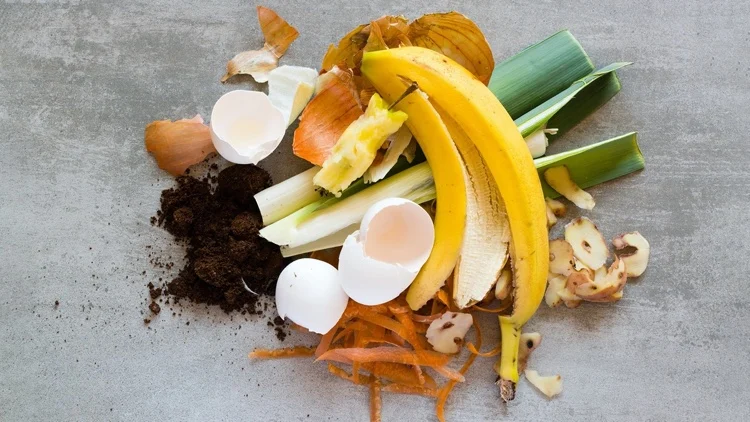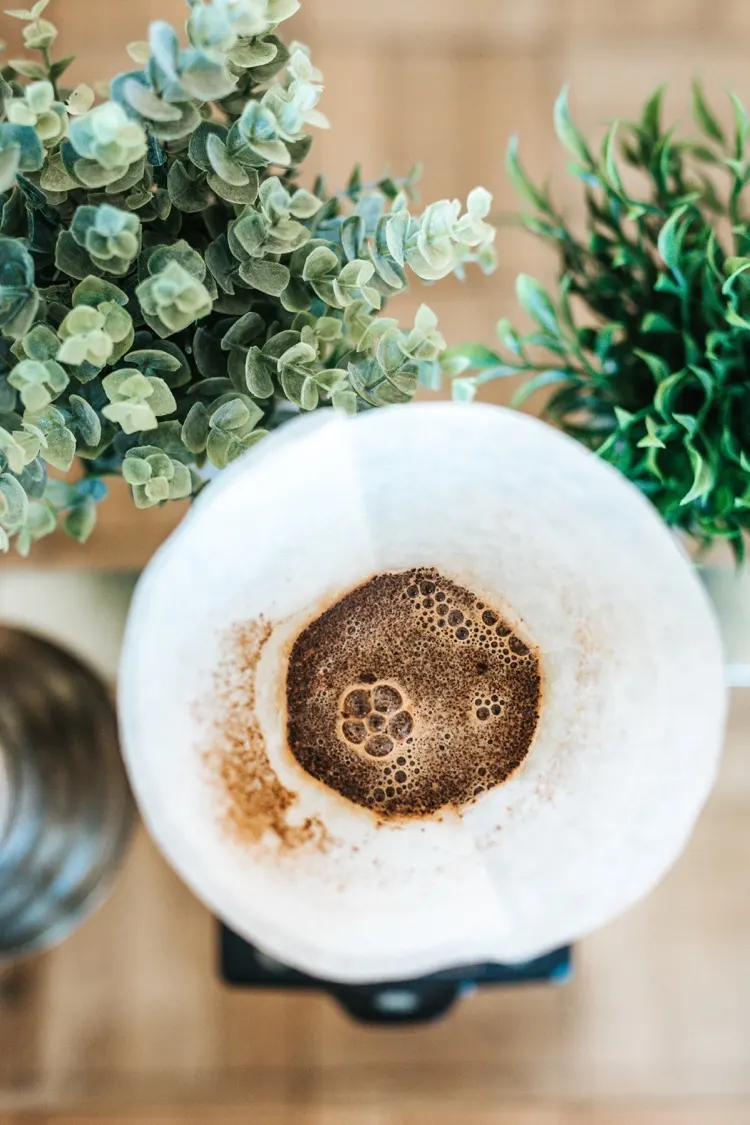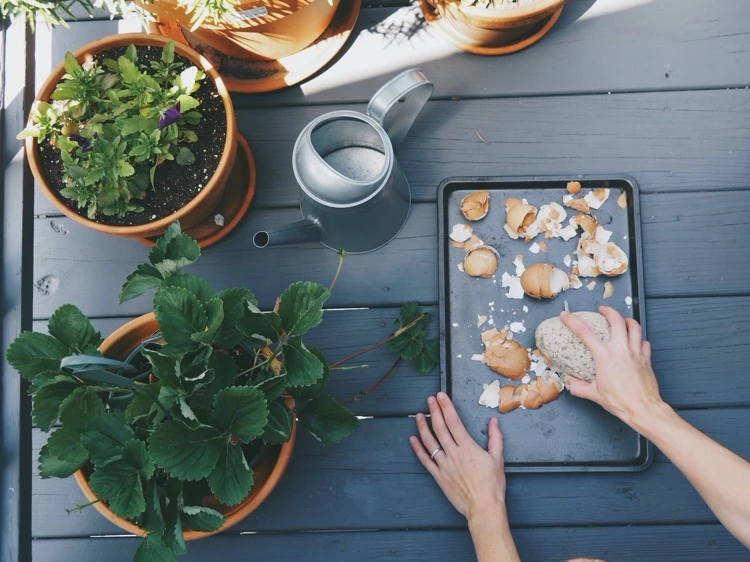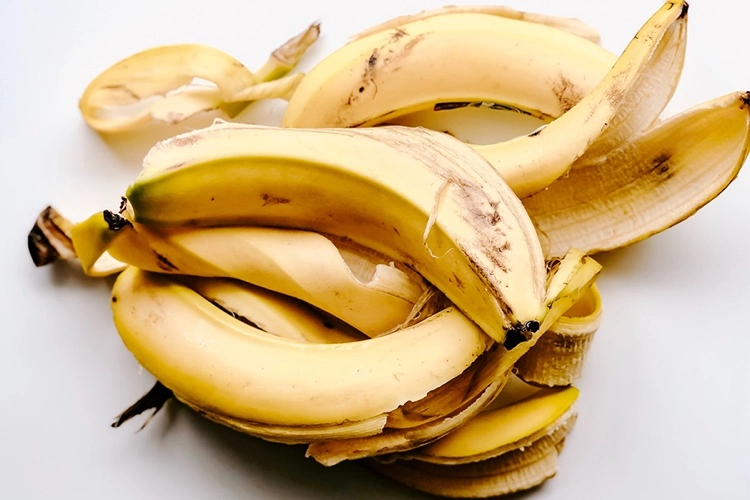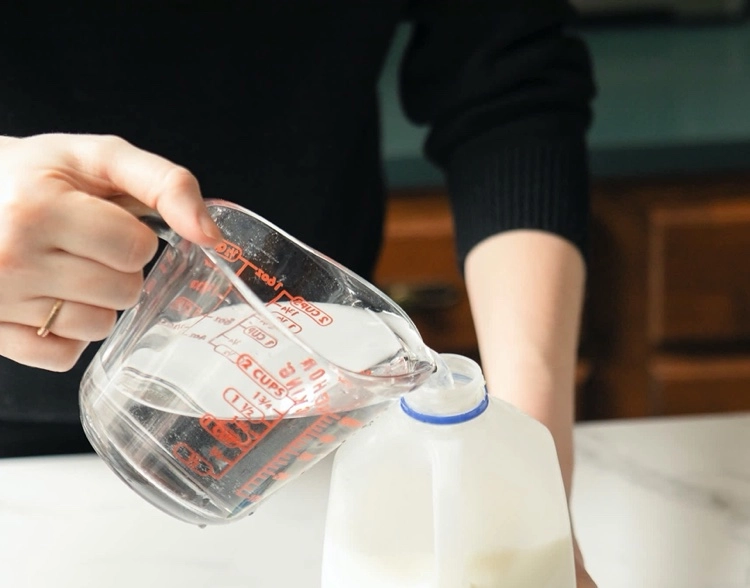Some kitchen scraps are just too good to be thrown away. Which waste products can be used as fertilizer and for which plants? How are natural fertilizers made?
Especially for those who have a garden, the waste from the kitchen can be really useful. You’ve probably heard that things like coffee grounds, banana peels, etc. can be successfully used to fertilize plants. Today we would like to round up the 7 best waste products to use as fertilizers that are simply much too good for the garbage can.
Fertilizer Instead of Waste: Plants Love These Inexpensive Home Remedies
It’s no secret that you should fertilize both ornamental and crop plants to encourage a healthy growth. In addition to water, air and light, most plants also need nutrients in the form of a suitable fertilizer. A quick trip to the garden center is all it takes to see how many artificial fertilizers are available – both mineral and organic. But you don’t necessarily have to use a store-bought fertilizer, because there are many natural alternatives available at home that can meet at least some of your plants’ nutrient needs. Each of these home remedies is rich in nutrients that are important for different plants and can help them grow. Here are the top waste products to use as fertilizers:
Coffee and Coffee Grounds Create an Acidic Hummus Soil
Coffee grounds are probably the best known, but also one of the best natural fertilizers ever. It is not for nothing that they earned the first place in this collection. Although not all plants like coffee grounds, there is a whole range of plants for which the coffee residues are very valuable. Among other things, these are plants that love acidic, humus-rich soil. These include, for example, rhododendrons, hydrangeas, cucumbers, blueberries and zucchini. The coffee grounds are sprinkled directly around the plants and worked into the soil so that they decompose faster and provide the necessary nutrients to the roots of the plant. Alternatively, you can cover the powder with a layer of mulch.
You can also water houseplants directly with diluted coffee, although for garden plants the dried coffee grounds are a better alternative. However, the used coffee powder should always be well cooled and dried, otherwise it may mold and harm the plants rather than benefit.
Also read: 5 Options for Eco-Friendly and Natural Nitrogen Fertilizer for Plants
Egg Shells Provide Valuable Calcium
Egg shells can help plants build strong cell walls. They contain large amounts of calcium carbonate, which some crops need to thrive. Thus, the shells do not provide nutrients to the soil, but increase its lime content. You can use the waste product to increase the pH of the soil and neutralize any acidification. Egg shells also contain other important elements such as magnesium, which is essential for the light reaction of photosynthesis. Plants that will benefit from this natural fertilizer are for example beans, peas, onions, chives, carrots, currants, raspberries, roses and others.
How to Prepare a Fertilizer from Eggshells?
First, rinse the eggshells thoroughly and let them dry completely. Then crush the shells, otherwise they cannot decompose well. For this you can use a pestle, as well as a suitable device such as the coffee grinder or a blender. The main thing is that the shells are processed into a powder that you can rake directly into the soil of the plants.
Alternatively, you can make a liquid fertilizer by dissolving the powder in water and watering the plants with it.
Note: In some cases, additional fertilization with eggshells is unnecessary. If you water your plants with hard tap water, or your soil already has the necessary lime content, it is better not to fertilize it with eggshells. However, kitchen waste is very valuable in the garden when the plants need an extra dose of calcium.
Also read: What Fertilizer for Rose Bushes in Fall Should You Use?
Fertilize Plants with Potato Water
Potatoes are an important part of our menu and there is hardly anyone who does not like t and cook them. The next time you boil some potatoes in the pot, skip the salt and save the water after cooking. The unsalted potato water is packed with potassium and vitamins that is very useful to plants like tomatoes, cucumbers, squash, roses, geraniums, etc. However, when using it, make sure that the water is completely cooled before watering. Otherwise you can damage the roots.
Other cooking water such as from pasta or rice can also fix a nutrient deficiency in various plants.
Also read: How and When to Add Lime to the Garden
Banana Peels Are Among the Best Cheap Waste Products to Use as Fertilizers
Bananas are also high in potassium, an important nutrient that helps plants move water between cells, grow healthy roots, produce fruit and flowers, and fight disease. The next time you eat an organic banana, don’t throw away the peel, but bury it next to one of your flowering plants in the garden. Be sure to cover it with a few inches of soil to avoid insect infestation and odor. As the peel decomposes, it releases its potassium and other nutrients into the soil, benefiting nearby plants.
You can also make a liquid fertilizer from the banana peels, which is great for a range of plants. These include, for example, roses, geraniums and fuchsias, but also tomatoes and cucumbers.
Also read: 5 Ideas on How to Reuse Pickle Juice
Recycle Used Tea Bags
If you’re a tea lover and drink tea every day, you probably throw a whole lot of tea bags in the trash. However, this is a mistake, because you can reuse the tea bags to prepare a cheap fertilizer for your potted plants.
Here’s how to make the fertilizer:
Fill your teapot with water as usual, but instead of fresh tea bags, add 1-3 used green or black tea bags. Let the tea steep for about 15 minutes before removing the bags and allowing the tea to come to room temperature. Fill the watering can with the brew and water your plants as usual. The tea provides additional nutrients beneficial for strong roots and healthy new leaves. Plants that you can safely water with the tea fertilizer are indoor plants such as succulents, ferns and orchids, and garden plants such as hydrangea, rhododendron and azalea. You can also mix the contents of the tea bag into the soil of the plants.
Fish Waste as Fertilizer
Do you like cooking with fish? Saving leftover fish from the kitchen to make a mild, all-purpose garden fertilizer is a great way to give your plants a boost of nitrogen, phosphorus, and potassium at the same time. Making your own fish emulsion fertilizer takes a little more manual work, but the result is one of the best natural fertilizers you can give your plants.
How to make fertilizer from fish:
Blend the leftover parts of the fish like the head, skin, tail, and scales in a high power food processor to grind them into a fine powder. After that you can either mix this powder into the substrate or put 1-2 spoonfuls in a bottle of water and use it to water the plants. This natural fertilizer is suitable for most garden plants, including vegetables such as cucumbers and tomatoes, fruit bushes, lawns and flowers.
Tip: You can also fertilize tomatoes with fish leftovers by burying the leftovers about 10 centimeters below the young plants when planting.
Do Not Throw Away Expired Milk
Has the milk gone sour? No, it doesn’t necessarily have to be poured down the drain, because sour milk is a good fertilizer for plants that tolerate acidic soil. However, the natural fertilizer should be slightly diluted so as not to acidify the soil. Plants that can be fertilized with milk include roses, ferns, perennials and tomatoes. In this post you can read more about whether and how you should water your tomatoes with milk.

